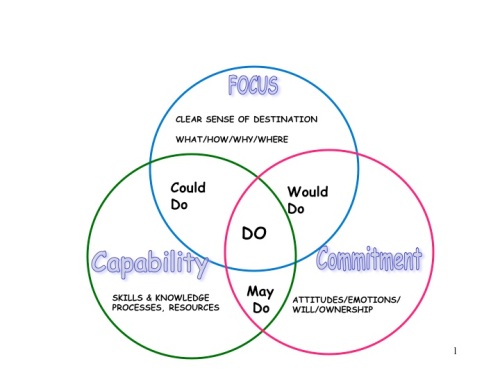 I think we know by now that leadership does not always involve building something up. Sometimes, it’s about dismantling something to make room for something else or reducing something rather than growing it. These are hard times involving difficult conversations, conversations that affect the lives of others…and not in a good way.
I think we know by now that leadership does not always involve building something up. Sometimes, it’s about dismantling something to make room for something else or reducing something rather than growing it. These are hard times involving difficult conversations, conversations that affect the lives of others…and not in a good way.
I’ve been thinking about the times when I’ve had such conversations with people, when change was afoot and jobs were diminishing or disappearing altogether. And I’ve been thinking too about how the sting of losing a job can be slightly eased, or made infinitely worse, by the person delivering the news.
So, if you are such a person, let’s pretend that you are my boss and you have to tell me that I no longer have a job. I’m fired. It’s a nerve-wracking proposition, I know, and one that you’d probably give anything to be able to delegate. But you can’t. So it’s you and me kid. And, when the time comes, here’s what I’m going to need from you:
The straight goods:
Beating about the bush might make you feel better but it won’t help me. Come to the point right away. Do not launch into a soliloquy about the company’s challenges, concerns or plans before letting me have it. After all, I’m not going to be part of your future. And really, at this point, I’m not likely to care am I?
Simply tell me you have bad news and then tell me what it is. If I want an explanation after that, (and I most likely will) I’ll ask for it.
Some direction:
Before we sit down together, please be prepared to tell me what is to happen immediately after our interview and in the ensuing period. You may appreciate that I will feel a little stunned and disoriented. If you anticipate this and make sure that all the information and documentation I need to begin the process of moving on is promptly available to me, it will help me feel just a little safer.
Some Support:
I may not need or want you to “hold my hand”, but it’s possible that I will need you to listen to me. This may take time. Please allow me this. If I am emotional give me a tissue, and the benefit of your quiet presence. If I am angry allow me to vent just a little. I may say things I don’t mean. To use the vernacular, suck it up. It’s not really about you.
Your professionalism
I know delivering this kind of news is terribly hard. For this reason you might be tempted to say things that will sound, well, kind of empty and insincere. I need you to practice what you are going to say to me so that when the time comes, you will deliver your message with clarity, empathy and without apology. There’s a difference between feeling sorry and apologizing. Don’t get the two mixed up.
My dignity intact:
Please allow me to make a dignified exit from the workplace. I am not a criminal. My job may be redundant but I’m not. Please do not frog march me out of the premises with my potted plant and my personal items in a box or demand my keys and passwords in front of my peers. The truth is, I’m more likely to speak well of you and the company if you treat me with respect.
============================================================================
Here’s my bottom line on this. Terminating someone’s employment is one of the most difficult things a leader must do. It is important to remember though that it is infinitely more difficult for the person on the receiving end. Doing all we can to help that person make a dignified and minimally painful transition to his or her next step is simply the right thing to do.
That’s what I think anyway. What do you think?




